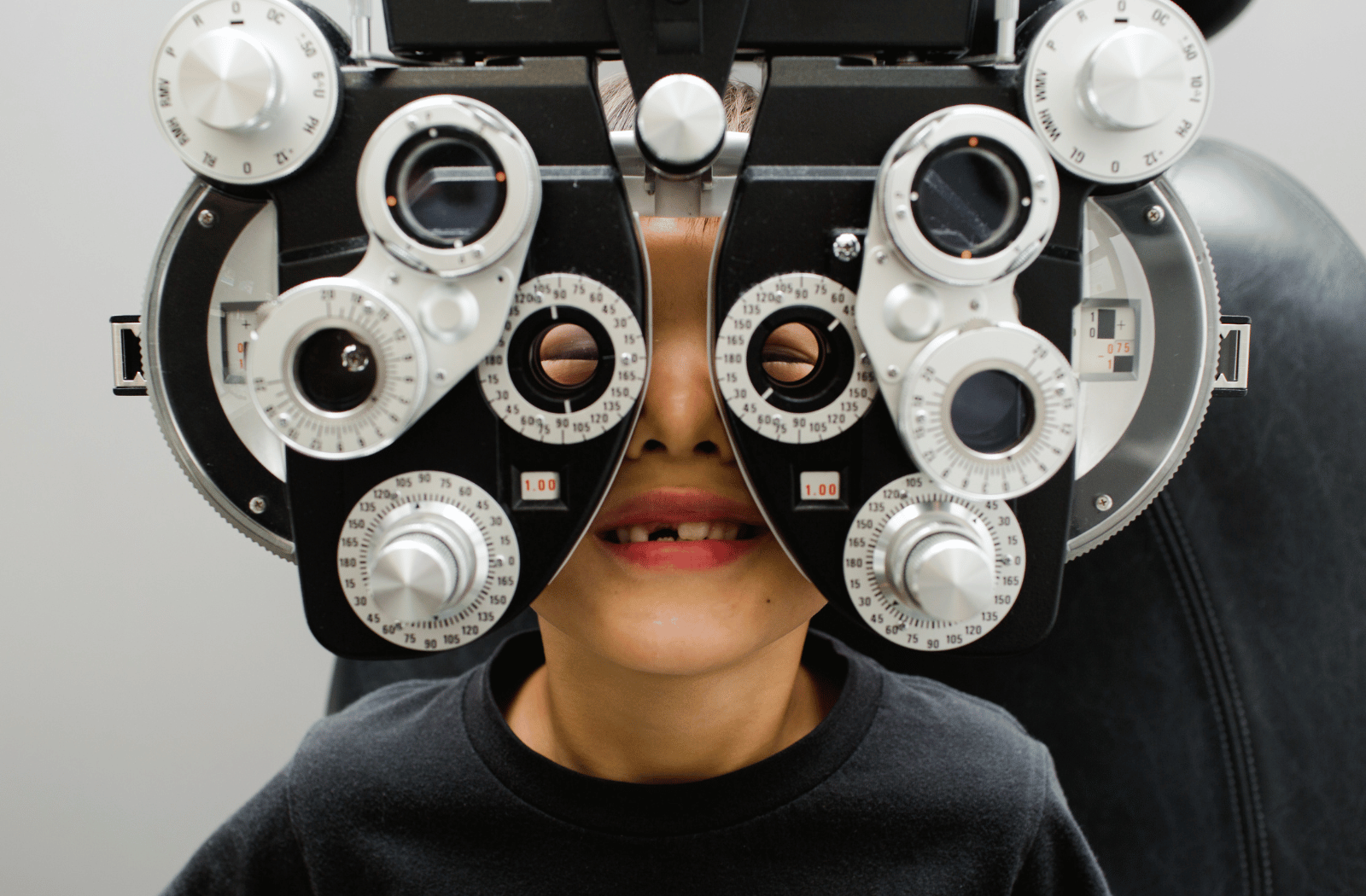It can be stressful for both you and your child if they struggle to see distant things clearly. They might be experiencing a common eye condition called myopia, also known as nearsightedness. It often starts during childhood but can worsen as they age. Thankfully, an optometrist can diagnose this condition during a comprehensive eye exam and help your child find corrective lenses to help them see clearly. But there are other options for dealing with myopia.
Myopia control involves methods or treatments to slow myopia progression in children. Some of these methods include special contact lenses and multifocal glasses.
What Is Myopia?
Myopia, also known as nearsightedness, is a common vision problem that makes distant objects appear blurry while nearby objects remain clear.
Think of the cornea as the window to the eye. Light passes through this window and gets bent by the lens so it focuses on the layer of photoreactive cells at the back of the eye called the retina. The retina then sends this information to the brain, and we end up with a clear image.
However, in the case of myopia, it’s like the window has become warped. This irregular shape can happen in 2 ways:
- The eye has grown too long
- The cornea is too curved
Either of these features can cause light to focus in front of the retina instead of directly on it, resulting in blurred distance vision. Some studies suggest myopia is on the rise globally, and experts predict that about 50% of the world’s population will be affected by 2050.
When Is Myopia Diagnosed?
Myopia commonly starts during childhood and progresses throughout adolescence. For many, myopia stabilizes around age 20, but until then, it can worsen and permanently change the shape of your eye. And the earlier it begins, the greater risk of a higher prescription.
There’s no safe level of myopia. Any amount of myopia can increase the risk of eye conditions like:
- Glaucoma
- Retinal detachment
- Cataracts
- Macular degeneration
If your child has blurry distance vision, book them a comprehensive eye exam as soon as possible. Their optometrist can assess the degree of myopia and recommend an appropriate treatment plan.

Detecting Myopia in Children
It can be challenging for children to communicate their vision problems. They might not have the words to describe what they’re experiencing, or they assume everyone sees the same way they do. That’s why staying vigilant and proactive about their eye health is crucial.
One of the best ways to catch any potential issues is with a regular comprehensive eye exam. The Canadian Association of Optometrists recommends annual check-ups for children between 5 and 17. Your child’s optometrist can spot signs of refractive errors and other visual challenges affecting your child’s vision.
In addition to regular exams, you can also talk to your child about their vision and watch for certain clues that may indicate a problem. These include:
- Difficulty seeing distant objects
- Complaints of headaches or eye strain
- Frequent squinting or blinking
- Rubbing their eyes
- Holding books or other reading material close to their eyes
- Covering an eye to read
- Struggling to concentrate on visual tasks
It’s easier to focus on learning when you can see the whiteboard clearly. So, if you notice any visual problems that may be impacting your child’s ability to learn, contact your eye doctor as soon as possible.
The Methods of Myopia Control
Myopia control refers to a set of treatments aimed at slowing myopia progression. The earlier myopia control is applied, the more effective it tends to be, as it gives myopia less time to elongate your child’s eye. The correct myopia management plan depends on your child’s unique needs and lifestyle, but there are many options available.
Multifocal Contact Lenses
MiSight contacts are daily disposable soft contact lenses specifically for myopia control. MiSight lenses approach the problems of blurry vision and myopia progression at the same time. They use a set of peripherals rings, designed like a bullseye, that changes how light focuses on the retina. The centre is your child’s correct prescription for clear vision, and the outer rings defocus light and cue the eyes to stop growing.
Studies show that children who wear MiSight contact lenses have a slower myopia progression than children who wear regular contact lenses or glasses.
Peripheral Defocus Glasses
MiYOSMART glasses use a unique lens design involving a honeycomb of defocusing dots. Like MiSight contact lenses, MiYOSMART glasses correct the refractive error while using defocused peripheral light to cue the eye to stop growing.
A 2-year clinical trial shows that MiYOSMART lenses can reduce myopia progression in children by around 60% compared to regular eyeglasses.
Putting Your Child’s Eyesight First
While myopia control can slow myopia progression, it can’t reverse any damage already done. These treatments require regular follow-up appointments with your child’s optometrist to monitor progress and adjust the treatment plan as needed.
Henderson Vision Centre offers myopia control plans to help preserve your child’s vision. You have the power to give your child the gift of clearer vision, so don’t delay. Book your eye exam today and ask about myopia control.



